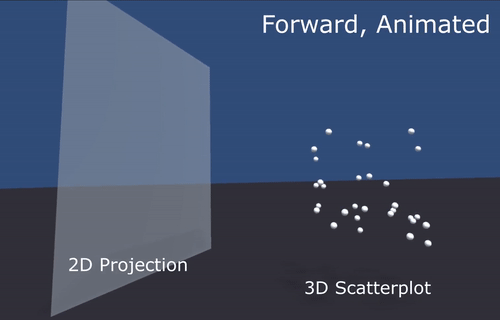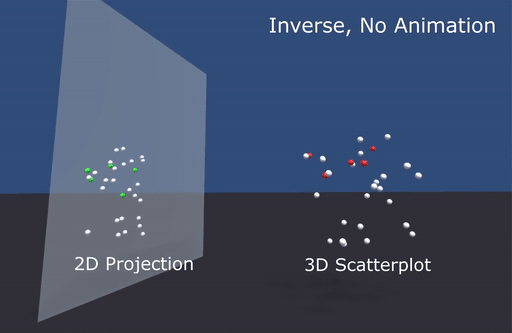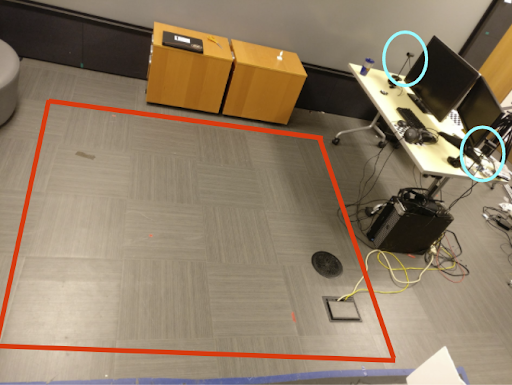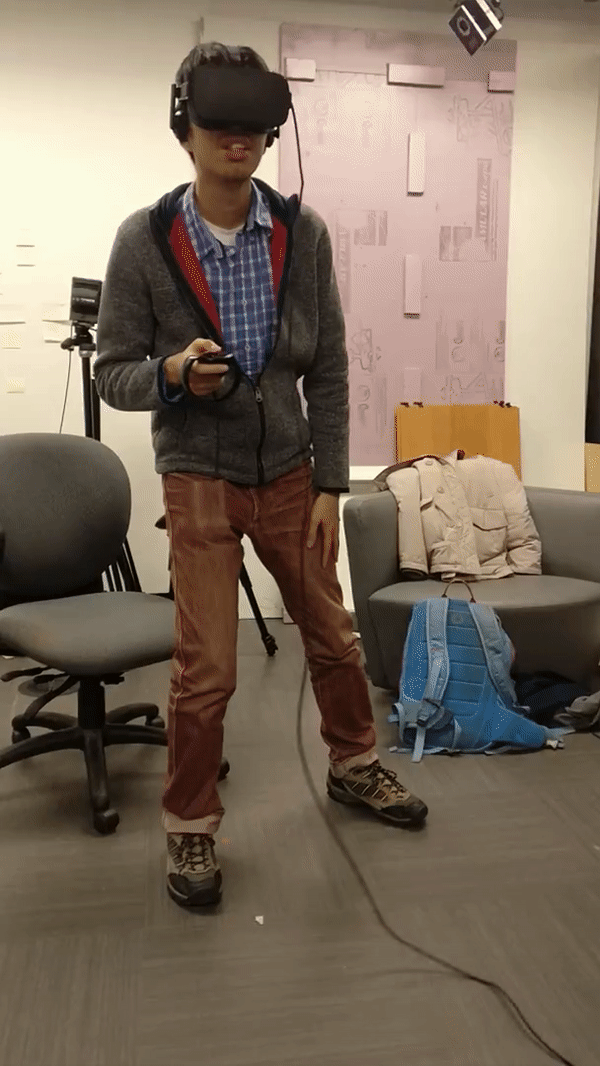Animated Transitions in Virtual Reality
Immersive Data Visualization

Perceptual InfoVis Study
A large number of studies have investigated the effects of different parameters for animated transitions (e.g. temporal distortion, bundling, staggering, etc.). In this project, I sought to investigate the extent to which this research could be applied to immersive data visualization in three dimensions using an Oculus Rift HMD.
I did a user study with 12 participants, who completed a large number of Multiple Object Tracking trials. They tracked groups of five objects across an orthographic projection transformation (i.e. an animated transition from a 3D scatterplot to its 2D projection onto a plane or vice versa).
The results validated the extension of common 2D difficulty metrics to 3D, and demonstrated that the presence of underlying structure in the data (e.g. collinearity of target points) reduced the difficulty of the tracking task.
I also confirmed the usefulness of animation by showing that it provided higher accuracy compared to a static condition. In the no-animation condition, participants demonstrated large body motions to make up for the lack of external motion queues.
Contributions: Concept, Implementation, Evaluation, Report Writing. This project was done alone, with advice from Prof. Sven Dickinson (the course instructor) and Prof. Fanny Chevalier (my M.Sc. Co-Supervisor).
 Go to portfolio.
Go to portfolio.

